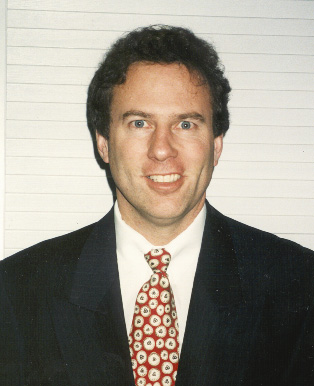ACA/NCTC 2014: 2 Top Leaders

The Pittsburgh-headquartered American Cable Association (ACA), and its sister organization, the Lenexa, Kan.-based National Cable Television Cooperative (NCTC), have been, for many decades between them, advocating for and representing their hundreds of cable TV, phone, and broadband members in their business and governmental endeavors.
In the case of the NCTC, it stands as an amalgam of nearly 950+ small-to-mid-sized U.S. cable operators, typically negotiating with large to small programmers for mass-volume rates that are the core of multiyear programming distribution agreements. As for ACA, its home base staff of eight, together with its communications VP, Ted Hearn, and legal senior VP, Ross Lieberman, both in Washington, DC, run the ACA cable telecom and media policy show for its 850 cable system constituents.
Since 1997, the ACA has been lead by veteran policy influencer, Matt Polka, himself an experienced lawyer (See, “Mixed Signals,” 12-10-2012, “The ACA’s Amazing Bandwidth), while the NCTC takes its direction from CEO and president Rich Fickle, whose NCTC tenure dates back to 2011, and who hails from corporate industry experiences with AT&T, Ascent Media, and Deluxe Entertainment.
ACA and NCTC today serve cable systems ranging from fewer than 100 subscribers to the largest, such as Mediacom, with roughly a million. As another example of the organizations’ scope is the roughly 7 mil. subscribers the ACA represents today in Washington, DC and in statehouses across the nation.
While serving July 28-30, in Kansas City, MO, as an opening panelist at the 2014 ACA/NCTC Annual Summit called The Independent Show, I had the opportunity to ask Matt Polka whom he recommended among the organizations’ up-and-coming leaders and as the better spokespeople for the two groups. Without hardly a hesitation, Matt barked out, “No problem, Gesner and Boyers.”
Robert Gessner, ACA Chairman; former NCTC chairman; and President, MCTV, Massillon, OH
The initial walk away I had from my half hour on the ACA/NCTC exhibition floor with Bob Gessner was that of a leader with fervent passion, unique articulation, and a tough competitive streak. When it comes to the ACA and small town cable in America, the guy can talk (which is meant only in a positive way)!
Gessner’s is a slightly larger than average ACA system, at about 40,000 current subscribers. He pointed out that for the ACA membership, the median system size is 900 subscribers, while the average size is about 4,000 subscribers.
Gessner’s initial focus was on the enhanced competition felt by ACA members these days. “Everyone these days is a competitor…Internet, TV, phone,” he mused. “So many of the smaller ACA and NCTC systems do not have the resources to be super active and aggressive,’ Gessner lamented. “Our industry must make the transformation from mere linear content offerings, and from being a tax collector for the content companies (who see the U.S. consumer as an annuity and a guaranteed periodic payment). Because that is unsustainable, and at the current rate, subscriber fees will double in five years, to $100,” Gessner challenged.
For the best future, the new ACA chairman believes that the proper transition for small-to-midsized cable operators will be one with an “infrastructure based on choice, and based on the subscription model; we will all get to a pure IP model, the only question is how soon.”
Yet, once that IP transition does occur, Gessner worries further about what he termed “the cable-ization of the Internet,” where the “content guys” quickly take over the Internet (just like they did in the 1970s with early national cable).
Finally, a few years down the cable road, Gessner – like his peers in this article – predicts the current cable content model will break, and “when it breaks, they will have to fix it,” he concludes.
Patricia Jo Boyers, Vice Chairwoman , ACA; President, BOYCOM, Poplar Bluff, MO
The current vice chairwoman of the ACA has been in the cable business in small town American for the past 22 years; she and her husband, Steve, still run BOYCOM together for their nearly 5,000 subscribers.
Boyers quickly reeled off four key small-to-midsized cable business challenges, when I asked for her list.
These are 1) industry consolidation 2) lack of choice 3) price increases and 4) subscribers having to pay for what they don’t want.
Her southeastern Missouri system has not yet fully upgraded from analog to digital, mostly due to monetary restrictions. That means today most of her system serves a broadband-only component. Although the Boyers’ BOYCOM has begun the costly upgrade process, which is well along, it has been tough, she says, because smaller systems, especially closely held ones like hers, do not have the access to financing that the larger ones do. Mrs. Boyers describes her home county as “perpetually impoverished,” which makes her task even tougher, she states.
When asked what she sees for her company five years hence, she believes her access into the homes of her customers will be lead by the Holy Grail of future residential telecom and media, that of the “smart pipe,” which offers a core Media Gateway-type product that vastly enhances access to content via multiple devices around the home. “Internet Protocol (IP) is about the future, and we have a bright future, because cable is best equipped to do that,” she concludes.
Jimmy Schaeffler is a telecom/media author and chairman and CSO of the Carmel-by-the-Sea-based streaming/broadband, broadcast, and pay TV/video consultancy, The Carmel Group (www.carmelgroup.com).
Multichannel Newsletter
The smarter way to stay on top of the multichannel video marketplace. Sign up below.
Jimmy Schaeffler is chairman and CSO of The Carmel Group, a nearly three-decades-old west coast-based telecom and entertainment consultancy founded in 1995.

